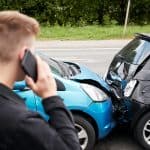
So far this year we have told you how to replace your headlight bulbs to make sure you have full brightness on the road. Now it’s time for us to look at how to make sure you’re safe when behind the wheel and the sun has gone off on its merry way.
There may be less traffic about at night but unfortunately this darkened time is when most of the accidents happen. This is because of reduced visibility and increased difficulty in judging speed and distance when the light is poor.
People can also become a little more nervous behind the wheel when they’re in the dark which makes them more erratic and prone to mistakes. Make sure you’re the one in control and with the space to react to others’ bad judgement.
And in classic fashion we have compiled a list of tips to help you make sure your driving is safe at night.
Safer Night Driving
There are a number of little differences you can make as a driver at night that will make you a lot safer on the road. Try these for a calmer, less risky experience:
- Back off – and leave a little more distance between you and the car driving ahead of you as sudden changes are harder to cope with in the dark.
- Turn on your lights – at least an hour before sunset and after sun-rise for a full hour to ensure you are clearly visible to other drivers.
- Dip your lights and avoid high beams – make sure you don’t dazzle other drivers when you’re out on the road.
- Keep consistent with your speed on the road – changing your speed can be very confusing for other road users.
- Night driving frights – many drivers do not like driving in the dark and this can make them more erratic. Give everyone a little more space.
- Look out for pedestrians – especially those who may have been out for a drink near pubs and clubs and don’t have their eyes properly on the road.
- Study road ahead – glimmers of light at the top of hills and bends could be the headlights of other vehicles, giving you a warning of oncoming traffic.
- Watch the kerb – as this can give you the best idea of your position on the road particularly when there is a lack of markings.
- Give yourself plenty of time – so you don’t have to make your journey under pressure and duress.

Other Checks
The other important factors to consider when out night driving are as follows:
Eye Care and Tests
Get regular eye tests to ensure that your eyes are good for the road and check for underlying eye problems including glaucoma. Try to avoid staring into oncoming headlights and where necessary wear your spectacles, but not your tinted lenses or sunglasses.
It’s also important to keep your eyes moving when you’re out on the road, dimming the dashboard lights to reduce glare and keeping the interior lights off and asking passengers to keep the smartphone use to a minimum.
Car Maintenance
It is extra important to make sure that your car is functioning properly in the dark. Other than your regular mechanical checks and servicing it is very important to ensure that parts of the car connected to visibility stay clean.Keep the headlights clean and make sure they are aimed correctly.
Additionally dirty windows increase the glare from other vehicles and are more prone to steaming up, which can seriously impact your visibility in the dark. You’ll also want to make sure your mirrors are clean and adjusted correctly.
Staying Awake
One of the most dangerous aspects of driving at night is the chance you may fall asleep. This is especially true if you are behind the wheel when you are usually in the sack. Taking regular breaks can help as does putting on loud,banging music that you can sing along to, helping keep the adrenaline and activity high.
If you are still having trouble keeping your eyes open, roll down the windows and get plenty of fresh air. Coffee can obviously help out here as can stopping the car and doing some quick exercise to get the blood flowing. If all else fails then stop the car in an appropriate spot and take a nap.
And Finally…
The most important thing about driving in the dark is being prepared. Everything on this list can really help you out but it’s important that you give yourself time to get ready. Taking long drives into the night when you least expect it can be very difficult and it’s something you only really want to do in an emergency. Don’t put yourself through the same sort of hassle when you know where you’ve got to be.













.png)
Pingback: The Nights Are Getting Darker: Increased Headlight Use – Are Yours Correctly Aligned? - BreakerLink Blog